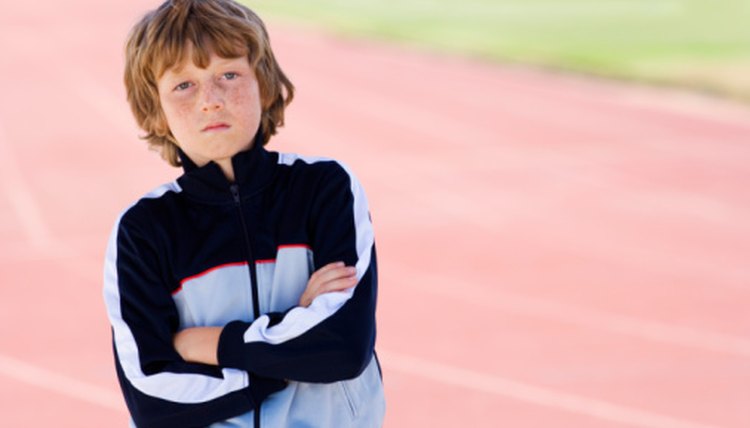Track & Field Events for Kids

Exercise is an important part of kids growing up healthy. In fact, the Centers for Disease Control and Prevention suggest that children get at least an hour of exercise everyday of the week. One way to get children involved in exercise is through the use of sports such as track and field. Track and field also provides a wide variety of events for children, which allows a child to sample new sports or focus on those in which she excels.
Build Skills and Strength
A child can get several benefits from taking part in track and field events, the most prominent being the effects of strength training and aerobic exercise. Strength training comes from preparing for meets through exercises, such as push-ups, sit-ups and even activities that include free weights in some events. Strength training builds muscles and strengthens bones in children. Aerobic benefits from activities that include running and jumping help strengthen the cardiovascular and pulmonary muscles, as well as help children keep their weight under control.
Run Like the Wind
Running events are one option for children in track and field. Depending on the area you live in and the programs that are available, events may include the 50-meter dash, 100-meter dash, 200-meter dash, 400-meter dash, 800-meter run, 1600-meter run and the 4 by 100 meter relay in which four participant each run 100 meters, passing the baton off between their teammates at the end of each section.
How Far Can You Throw?
Throwing events may also vary depending on the area that you live in, and the track and field competitions available to your child. One of the most common throwing events for the children's version of track and field is the softball throw in which competitors compete to throw a softball the farthest. In general, other throwing competitions, such as shot put or javelin throws, are not available to children until at least middle school or high school level.
Leaping and Jumping
Jumping options may also be limited depending on the age and location of your child. In general, kids jumping events will typically be limited to running or standing long jumps. Standing long jumps involve your child standing behind a line and trying to jump as far as possible without a running start. Running long jumps allow your child to get a running start at which point they jump as far as they can into a sand pit. More jumping events will open to your child as they grow older, such as hurdles and pole jumping.
References
Writer Bio
Chris Sherwood is a professional journalist who after years in the health administration field and writing health and wellness articles turned towards organic sustainable gardening and food education. He now owns and operates an organic-method small farm focusing his research and writing on both organic gardening methods and hydroponics.
